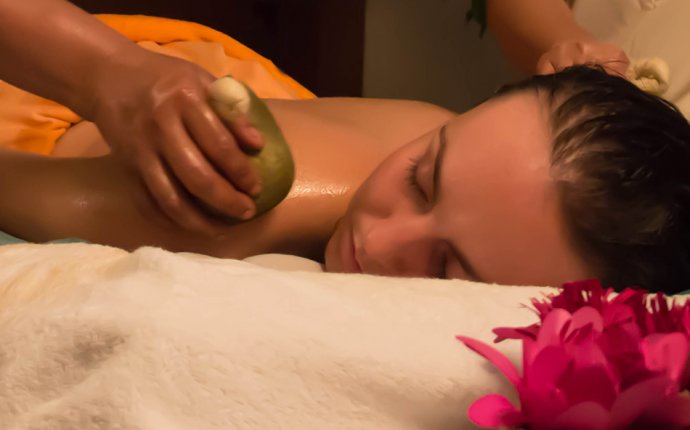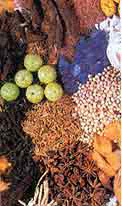
Maharishi Ayurveda Bangalore
The ancient Indian system, particularly its Kerala school; which is back in the reckoning after a brief hiatus, is as much concerned with promoting health and preventing disease as it is with curing ailments. Life Positive takes you to visit some flourishing practitioners and hospitals
It’s like a brick kiln of hopes and desires, hot and claustrophobic. On this sticky August evening, there must be over a hundred people milling around in a small hall. Many have been stewing for hours, waiting for just a frenetic three-minute interview and pulse-reading by the good doctor. Hope here has neither class nor color nor gender; its’ seekers include rich Gujarati businessmen and dirt poor, illiterate tribal women.
There are babies’ squalls erupting out of this thicket and children running around. Somehow, amidst this mess, order finds its place: Queues—one to see the assistant doctors who prescribe diet, another for the dispensary, and so on.
Soon, like a DNA strand, a queue shuffles into existence in front of me, too. Ah, the doctor wants to show off. He is sending me patients who uniformly report remarkable recoveries from problems so varied and complex that few would believe something as gentle as ayurveda can handle: an athletic young man emotionally kayoed by a bout of impotence; a pale, skinny 25-year-old who bares, like a freak show artist, various parts of his anatomy to show me the scars of a lifetime of multiple diseases and complex treatments.
And one of the fattest people I have ever seen, a prosperous-looking safari-suit-clad man, claims he has sloughed off 100 pounds after he flew down for treatment about a month ago from England.
Welcome to Dr Pankaj Naram’s clinic—rather one of his four clinics in one city alone: Mumbai, India. Forty-five-year-old Dr Naram’s roaring practice is an eye-opener to me. Sitting in Delhi, I was only familiar with the name of Brihaspati Dev Triguna, who rifles like a professional card hand through 500 patients a day. But here I was face-to-face with Dr Naram who handles, with a felicity as great as Triguna’s, 400 patients a day.
The jetsetting vaidya (traditional Indian doctor) spends a quarter of a year in Europe and the USA where his students run half a dozen ayurveda clinics. He claims that his transcontinental practice is worth million. I realized that there must be many more popular and eminent vaidyas working away with the diligence and quiet, proud expertise of goldsmiths in this gigantic country, but whose renown is local and locked in because the media doesn’t go there.
 Clearly, India remains the world’s largest repository of alternative (complementary, to be politically correct) medicine which successful treats more people everyday than ‘modern’ medicine can even dream of. Traditional and alternative therapies may be witnessing a healthy revival the world over, but here they never went out of circulation.
Clearly, India remains the world’s largest repository of alternative (complementary, to be politically correct) medicine which successful treats more people everyday than ‘modern’ medicine can even dream of. Traditional and alternative therapies may be witnessing a healthy revival the world over, but here they never went out of circulation.
Ayurveda is the oldest existing health care system. Ayurveda’s growth graph in the past decade has been impressive. Middle and upper class people who had shifted their allegiance completely to allopathy, are again trying out ayurveda and other therapies, after bad experiences with allopathy. The Indian government, with an eye on nationalistic legitimacy, is also promoting ayurveda.
Besides, private enterprise is active in what can be called the Kerala school of ayurveda. The result is the blossoming of panchkarma clinics and hospitals al lover India. The panchkarma are the five internal cleansing procedures akin to the six in yoga. They are: vasti (enema), vamana (vomiting), virechana(purgation), nasya (application of herbal preparations through the nostrils), and rakta moksha(therapeutic release of toxic blood).
In Europe and America, new ayurveda hospitals are now focusing almost exclusively on panchkarma and allied treatments, perhaps because getting medicines ratified by drug authorities is a time-consuming and expensive process.
Ayurveda literally means the science of life. It follows that prevention of disease, promotion of health and longevity are given the requisite importance in addition to the curative aspect. Like the four Hippocratic humors, ayurveda’s starting point is the tridosha (vata, pitta and kapha) theory.
Charaka’s treatise, the primary and the oldest known ayurvedic text, says that the equilibrium of the three doshas in the body means health and their imbalance manifests as disease. To Ayurveda’s detriment, the three doshas are translated crudely as wind, bile and phlegm. But a book published by the Kottakkal-based Arya Vaidya Sala, the premier ayurveda institution in Kerala, India, clarifies that vata includes functions of the central and sympathetic nervous system; pittasignifies metabolism and heat production, including digestion and formation of various secretions and excretions; and kapha implies heat homeostasis and formation of mucus.
In ayurveda’s larger scheme, the balanced working order of dhatus (elements) and malas (wastes) is also considered vital. And they get vitiated when the three doshas are out of kilter. The seven dhatus, which produce each other in an ascending order, are: rasa (body fluids like plasma and lymph), blood, muscle, fat, bile, marrow, and shukra (sperm/ovum). Malas are stool, urine and sweat. The concept of jathragni, or gastric fire, is another of ayurveda’s contribution to health care. Ayurveda further holds that all diseases originate from a little known element called aam. When, due to slackened digestion (weakened gastric fire), the essences of improperly digested food enter the body fluids, the contaminated mix is called aam.
Vaidyas use a two-pronged strategy: strengthen the digestive fire and remove aam. The texts suggest two main therapies: shamana (through medicines, etc) and shodhana (cleansing and rejuvenation) through panchkarma and rasarana. During treatment, pathya (diet and other regimen) is to be strictly adhered to.
VAIDYA BRIHASPATI DEV TRIGUNA
My first stop on the ayurveda trail is Triguna. For a man who has felt the pulse of kings and presidents, his clinic is unpretentious. It is located in a squalid little village named Sarai Kale Khan behind Delhi’s Nizamuddin railway station. There are rows of benches in a shed-Iike structure which on a working day resembles a repository railway platform. Outside it, however, you may spot some six-door cars of wealthy and powerful patients parked next to rickety bicycles and hawkers’ carts.
Eighty-two years old, brawny and turbaned, Triguna exudes an old world charm and sagacity as he sits in a room behind the shed. Despite the chaos outside, he is all concentration as he feels the pulse of each patient who is ushered in. He tells the patient what his or her present trouble is, but such is his stupendous proficiency that he apparently comes to know the patient’s past and future medical history.
As an ayurveda verse goes: ‘Every raga finds resonance on the veena‘s strings; and the nuances of every disease reverberate in the pulse.’ Pulse-reading over, Triguna mumbles some Sanskrit and Hindi phrases to his son and comrade, Devendra Triguna, sitting next to him, who writes out the diagnosis and the prescription. His fame may rest on his accurate and sophisticated pulse diagnosis but patients return because his medicines—which are made in his own pharmacy, mostly from herbs grown in his herb garden—work.














